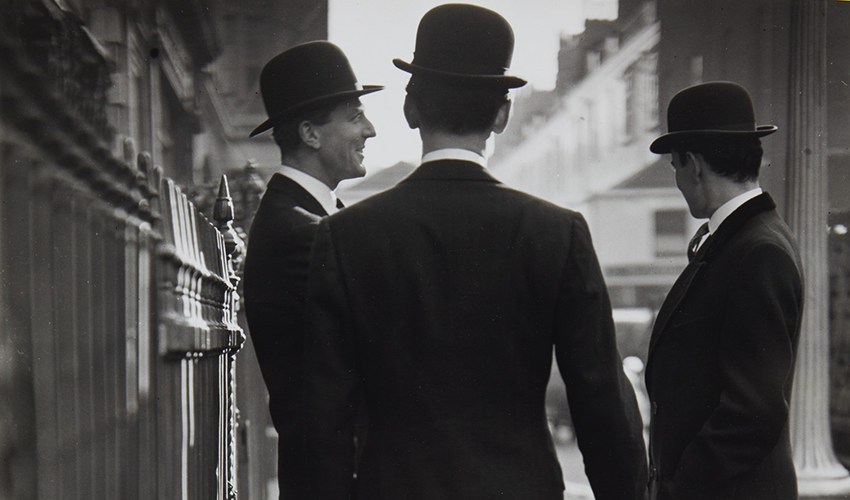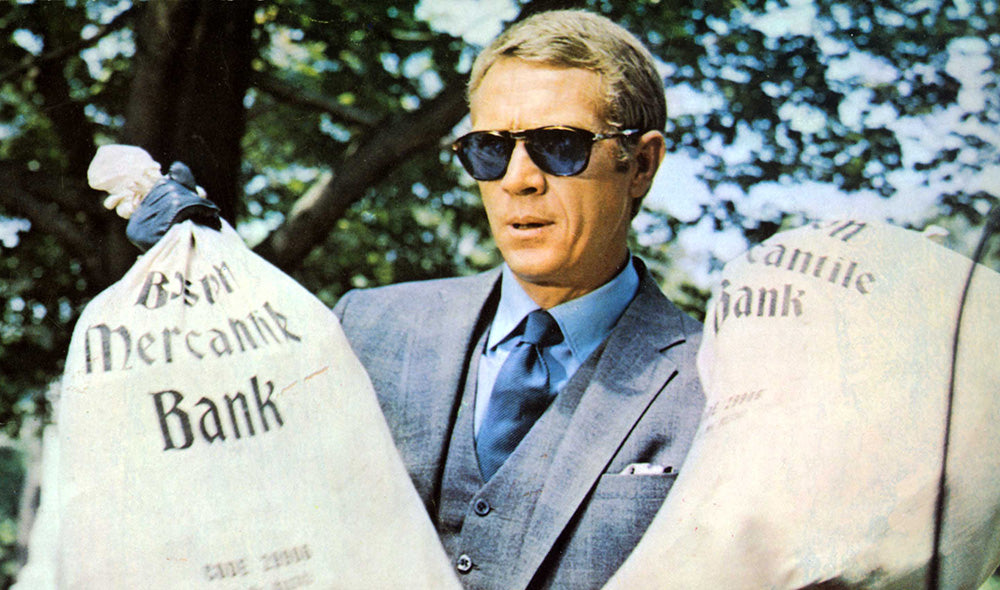Corduroy's Tough Journey - From Manchester to Matera
Daniel Craig test-drives his corduroy suit on location in Matera, Italy (2019)
From the dark satanic mills of Northern England to the rocky hills of Southern Italy, the humble corduroy cloth has encountered many twists and turns throughout its history. Some accounts of the textile's origin refer to a thick, cotton fabric known as fustian, developed in the ancient Egyptian city of Al-Fustat and introduced to Europe in medieval times by Spanish and Italian merchants. England's King Henry VIII was said to favour fustian as a warm, comfortable lining for his court attire, and there are suggestions that the name corduroy is derived from 'corde du roi' - the French translation of King's cord. However, the general consensus is that corduroy was created in Manchester during the 18th century, and the term is a compound of 'cord' (given the material's ribbed appearance), and 'duroy' (a hardwearing woolen fabric produced at the time).

Victorian textile-workers. Manchester (c.1900)
During the Industrial Revolution, corduroy was used to produce durable overalls for mill-workers and farmhands. The 'poor man's velvet' remained a working class fabric for the first hundred years of its life, before being adopted by artists and intellectuals across Europe in the late 19th century. The utilitarian cloth was soft, warm and relatively light-weight, but had a rugged appearance and delivered social attitude - it was the perfect fabric to be tailored into suits, jackets and trousers for Bohemian society.

Portrait of corduroy-clad Swedish artist Nils Kreuger by Richard Bergh (1883)
The war years provided little opportunity for men to use corduroy as a fashion statement, but the cloth found a new purpose and suddenly experienced great demand. The British Women's Land Army uniform of WWII included a green jersey, felt hat, leather brogues, long socks... and brown corduroy breeches.

British Land Army Girls (1945)
The immediate Post War period saw a severe downturn in demand for corduroy, but the industry was about to witness another reprieve. In much the way that denim had been adopted by counter culture movements in the United States, the poor-man's-velvet found a market with a generation of Europeans that wanted to dress and do things differently. Corduroy clothing was worn by popular artists such as Mick Jagger and John Lennon, together with Paul, George and Ringo, prompting Edward Heath (then President of the Board of Trade) to announce that The Beatles had "saved the British corduroy industry".

John Lennon in corduroy jacket and cap filming Help! on Salisbury Plain (1965)
Suddenly, corduroy was king again. Every wale size, from needlecord to elephant or jumbo, found itself on the backs and backsides of the music industry's key players, together with numerous appearances of the plush-ribbed cloth on the silver screen. Style icon Steve McQueen stepped out in corduroy as The Cincinnati Kid (1965), followed by Dustin Hoffman making his mark in The Graduate (1967) and Paul Newman in Butch Cassidy and the Sundance Kid (1969) - his co-star Robert Redford later adopted the look for All The President's Men (1976).

Top-left clockwise, McQueen, Hoffman, Newman and Redford
At the turn of the 21st century, corduroy's journey continued, and its popularity ebbed and flowed with peaks and troughs akin to its undulating surface. However, any renewed doubts cast over the future of the corduroy industry were set aside in 2021, when another British saviour arrived - in the unlikely form of 007. For the first time in the character's history, James Bond wore a corduroy suit... and it performed with aplomb. A recreation of the suit can be viewed here.
Bond helps corduroy on its journey in No Time To Die (2021)
The slim-fitting, unstructured, stretch-baby-cord suit worn by Daniel Craig in No Time To Die added a modern dimension to the 007 wardrobe, and arguably elevated corduroy to its sartorial peak - although Craig was not the first Bond actor to sport this sportiest of looks. In searching through the image archives for this article, we discovered a photograph that illustrates how a corduroy suit can be worn ALMOST anywhere...

Connery keeps his cool in Conduit Cut corduroy (1990)
Click here to view the Unstructured Corduroy Suit collection.





